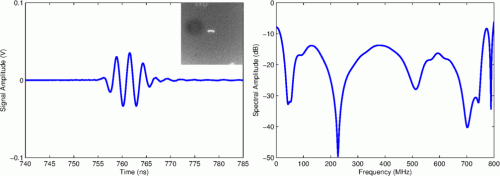Listening to blood cells: Simple test could use sound waves for diagnosing blood-related diseases

New research reveals that when red blood cells are hit with laser light, they produce high frequency sound waves that contain a great deal of information. Similar to the way one can hear the voices of different people and identify who they are, investigators reporting in the July 2 issue of Biophysical Journal, published by Cell Press, could analyze the sound waves produced by red blood cells and recognize their shape and size. The information may aid in the development of simple tests for blood-related diseases.
"We plan to make specialized devices that will allow the detection of individual red blood cells and analyze the photoacoustic signals they produce to rapidly diagnose red blood cell pathologies," says senior author Dr. Michael Kolios, of Ryerson University, Toronto.
Deviations from the regular biconcave shape of a red blood cell are a significant indicator of blood-related diseases, whether they result from genetic abnormalities, from infectious agents, or simply from a chemical imbalance. For example, malaria patients' red blood cells are irregularly swollen, while those of patients with sickle cell anemia take on a rigid, sickle shape.
Using a special photoacoustic microscope that detects sound, the investigators were able to differentiate healthy red blood cells from irregularly shaped red blood cells with high confidence, using a sample size of just 21 cells. Because each measurement takes only fractions of a second, the method could eventually be incorporated into an automated device for rapid characterization of red blood cells from a single drop of blood obtained in the clinic.
"We are currently developing a microfluidic device, which integrates the laser and probes and flows single cells through the target area. This would enable measuring thousands of cells in a very short period of time with minimal user involvement," says first author Eric Strohm, who is a graduate student in Dr. Kolios' laboratory. The investigators are applying the method to other types of cells as well, including white blood cells, and they are also using it to detect changes in photoacoustic signals that occur when blood cells clump together to form dangerous blood clots.
More information: Biophysical Journal, Strohm et al.: "Probing Red Blood Cell Morphology Using High-Frequency Photoacoustics." dx.doi.org/10.1016/j.bpj.2013.05.037
Journal information: Biophysical Journal
Provided by Cell Press















